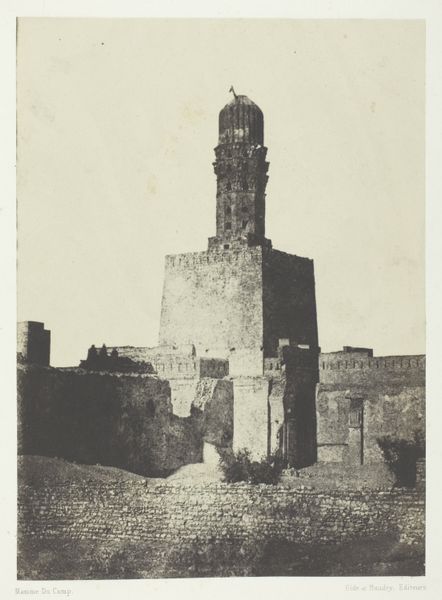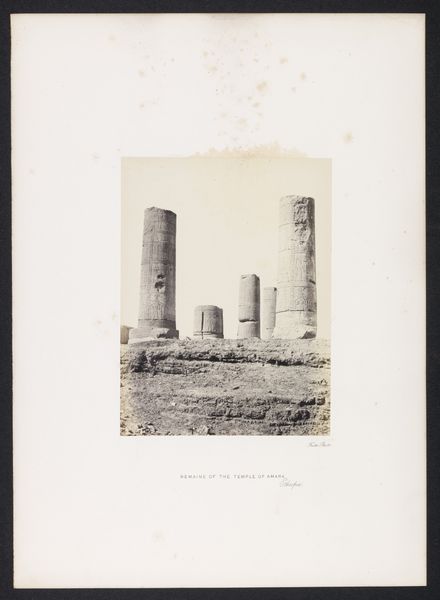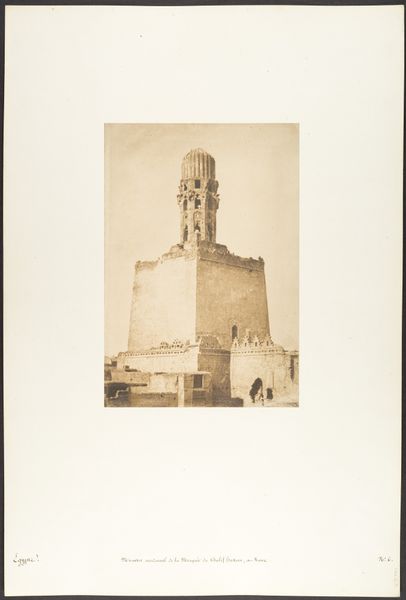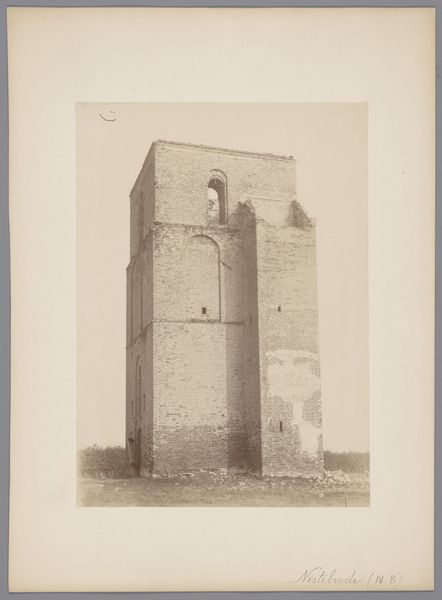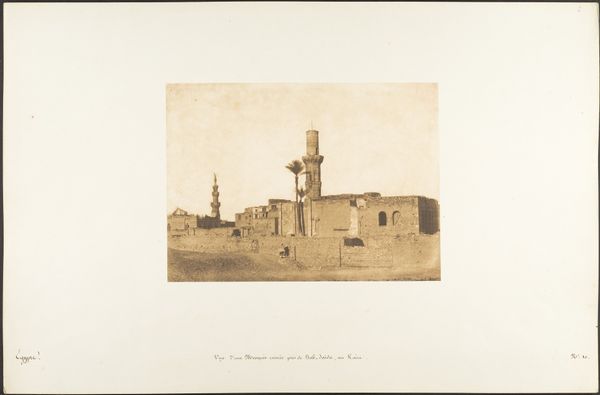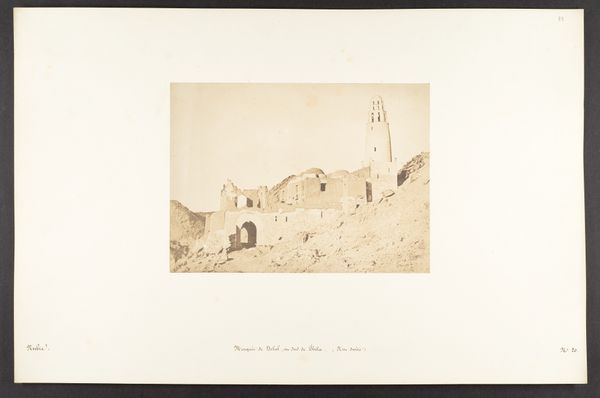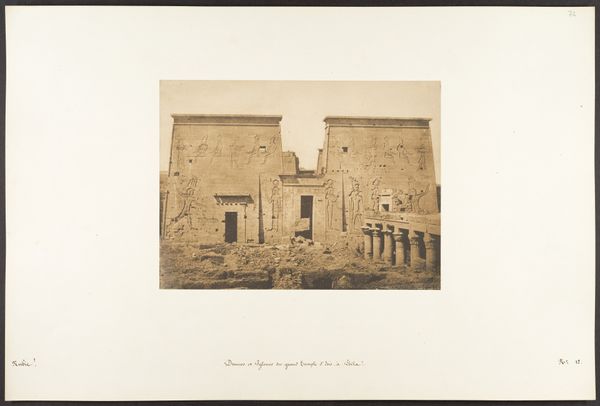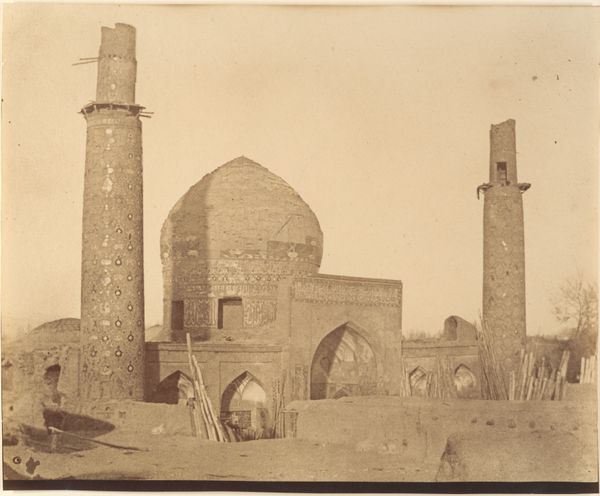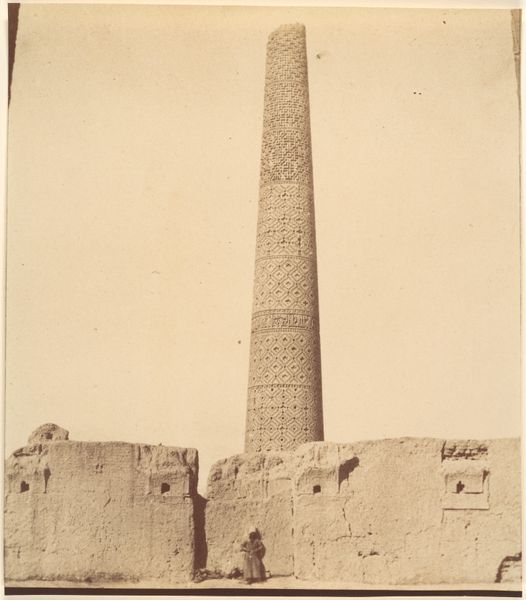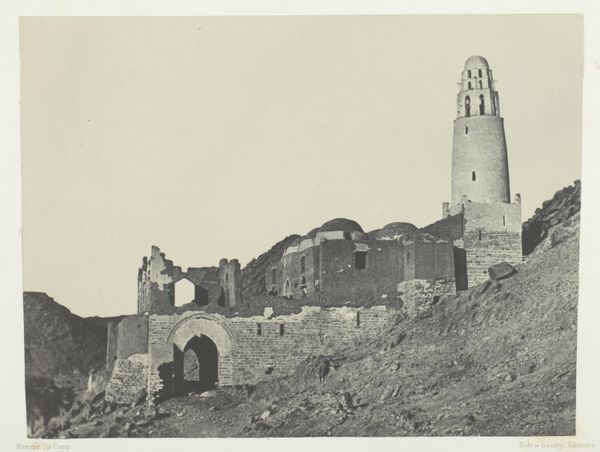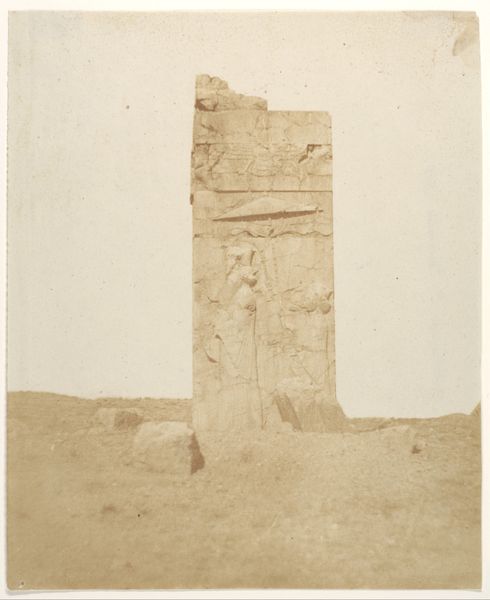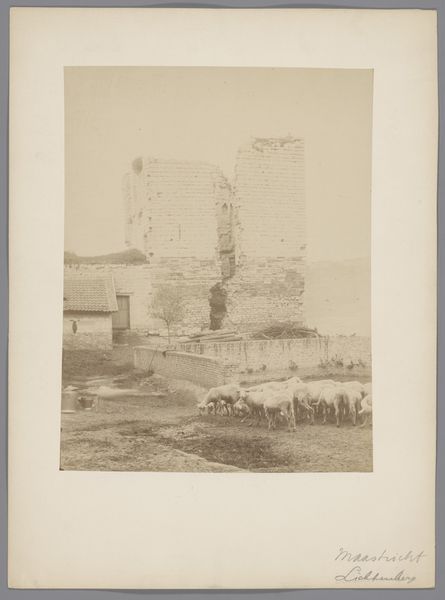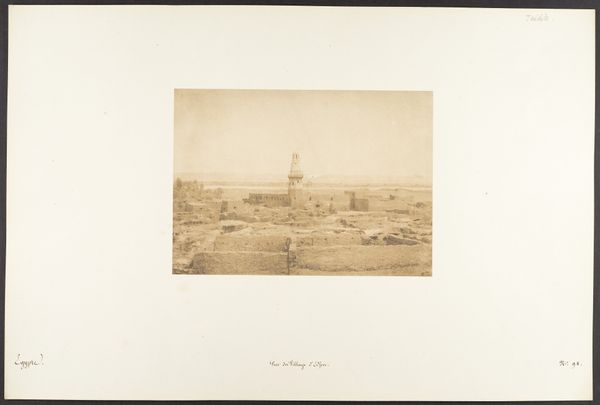
Minaret oriental de la Mosquée du Khalif Hakem, au Kaire 1849
0:00
0:00
photography, gelatin-silver-print, architecture
#
landscape
#
photography
#
orientalism
#
gelatin-silver-print
#
islamic-art
#
architecture
Dimensions: Image: 8 7/16 × 6 1/8 in. (21.5 × 15.5 cm) Mount: 12 5/16 × 18 11/16 in. (31.2 × 47.5 cm)
Copyright: Public Domain
Editor: This gelatin-silver print, taken in 1849 by Maxime Du Camp, is titled "Minaret oriental de la Mosquée du Khalif Hakem, au Caire". The tones create an otherworldly, almost dreamlike quality, but I wonder how its historical context plays into how we view it today. What can you tell me about its cultural significance? Curator: Considering its time, we must look at the rise of Orientalism and how the West portrayed the East. Photography like this became a tool. How might this image have functioned as a document versus something that reinforces existing power structures? Editor: So, it’s less about purely documenting and more about how it’s framed through a Western lens? Are we talking about creating or perpetuating stereotypes? Curator: Precisely. Think about who controlled the narrative. Who gets to represent whom, and for what purpose? Early photography like this often reinforced colonial attitudes by exoticizing the subject and emphasizing the ‘otherness’ of non-Western cultures. Editor: I hadn’t really considered how much power lies behind simply choosing what to photograph, and from what angle. What would this mean for the perception of Islamic art at the time? Curator: The impact was multifaceted. It influenced artistic trends, academic studies, and public perceptions, but it's crucial to understand how images like these played into constructing a particular vision of Islamic art that might not be entirely accurate or representative. Did the artistic establishment validate this vision? And why? Editor: This has completely shifted my view! I need to delve more into the role of visual media in shaping historical narratives and consider it's power to subtly reinforce existing cultural assumptions. Curator: Exactly. It’s about critically evaluating these images as historical documents and recognising their potential biases. There is power and potential for manipulation.
Comments
No comments
Be the first to comment and join the conversation on the ultimate creative platform.
